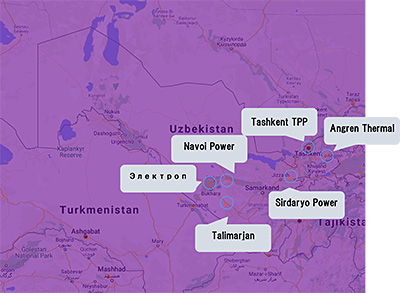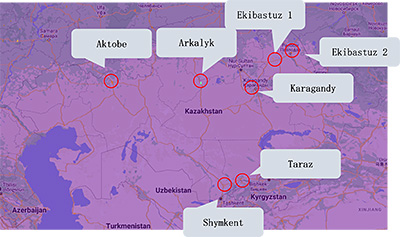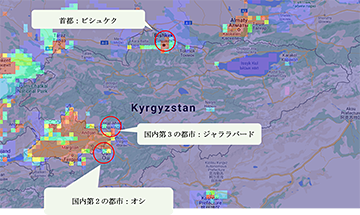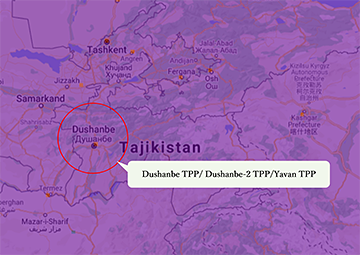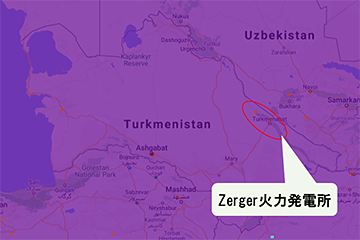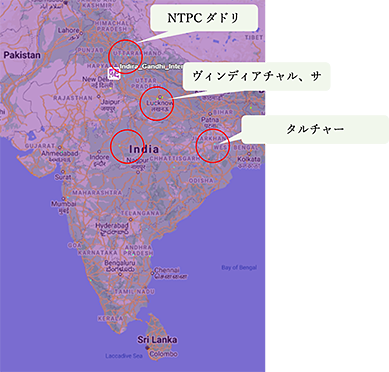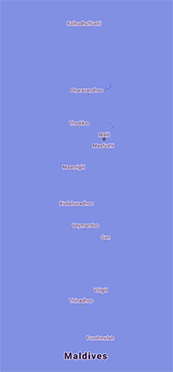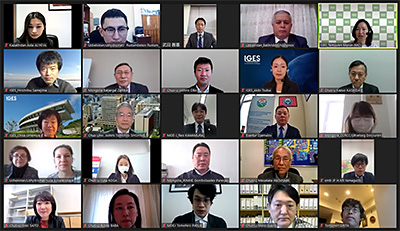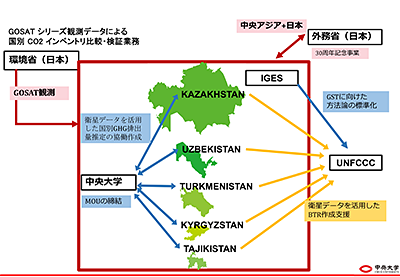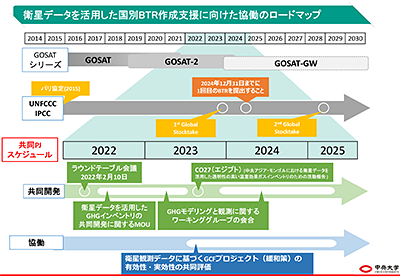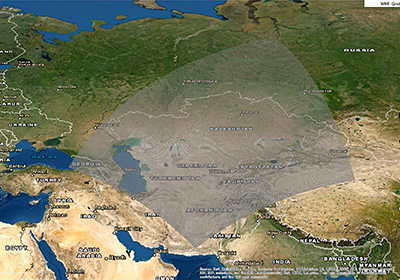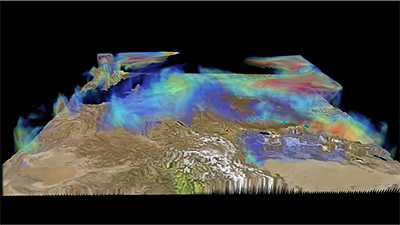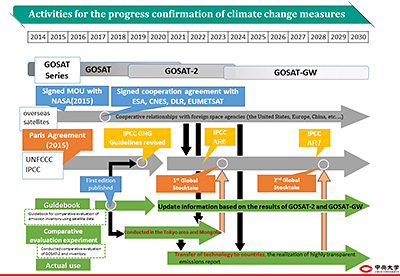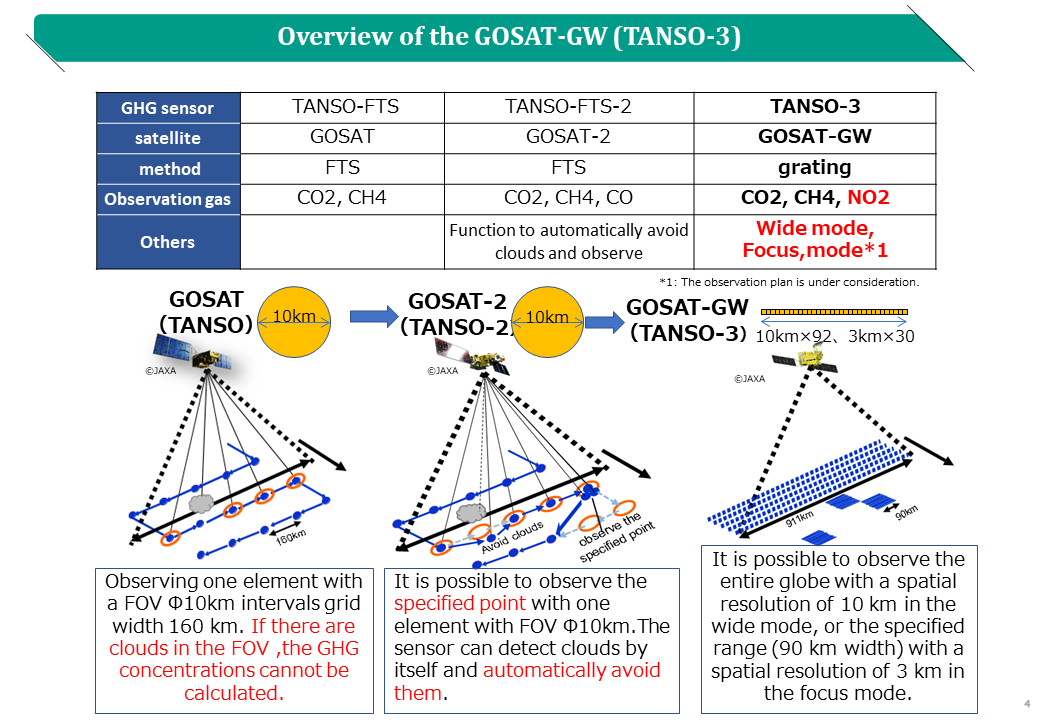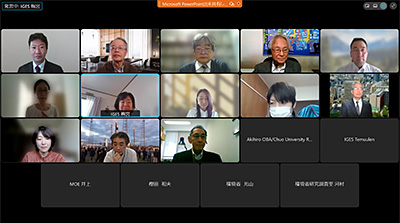中央アジア5か国(カザフスタン、ウズベキスタン、タジキスタン、キルギスタン、トルクメニスタン)へ展開するべく、方法論を整理し、外務省及び各国大使館を通じて各国政府の担当者を2022年2月10日に招聘し、オンラインラウンドテーブル会議を実施しました。
会議ではモンゴルで先行しているCO2インベントリ比較・検証の成果を共有し、ラウンドテーブルに招待する被検証候補国におけるGHGインベントリの整備状況やニーズを理解した上で、GOSATデータの活用可能性について議論しました。
さらに、インベントリ比較・検証の成果を2026年~2027年に情報収集・準備プロセスが開始する第2回GSTに向けて活用することを目指すため、2021年11月から開始する第1回GSTの実施状況に関する最新情報及びGSTと強化された透明性枠組みとのリンクを説明したプレゼンテーションも行って共有しました。GSTに関する情報には、各国のインベントリの比較・検証の現状の整理も含めました。
各国との意見交換では、当技術の発信と各国のインベントリ作成に対する当技術の活用アプローチについて議論し、協働体制の構築に向けた必要な手順についても確認しました。
この結果 中央アジア5か国すべてが、GOSATシリーズを用いたGHG排出量推定事業に参加したいとの表明がありました。特に、中央アジアの中心国と位置付けられているカザフスタンの参加者からは、会議終了直後に「非常によかった。協力を続けたい」とのコメントが日本大使館を通じて外務省から報告頂いきました。
今後は、外務省及び中央アジア各国大使館にも協力を頂き、中央アジア各国と事業MOUを締結し、環境省が推進するGOSATシリーズを用いたGHG排出量推定手法を展開することが可能となりました。
To deploy the methodology to the five Central Asian countries, the Ministry of Foreign Affairs and embassies of each country were contacted to invite government officials of each country to an online roundtable meeting on February 10, 2022.
The meeting shared the results of CO2 inventory comparison and verification already conducted in Mongolia and discussed the feasibility of utilizing GOSAT data in invited candidate countries for GHG inventory, understanding their inventory preparation status and needs. Additionally, presentations were made to share the latest information on the implementation status of the first Global Stocktake (GST) starting in November 2021 and to explain the link between GST and the enhanced transparency framework, aiming to utilize the results of inventory comparison and verification for the second GST starting its information collection and preparation process from 2026 to 2027. Information related to GST included an overview of the current situation of inventory comparison and verification in each country.
During the exchange of opinions with each country, discussions were held on disseminating the technology and utilizing the technology for inventory creation in each country, confirming the necessary steps toward building a collaborative framework.
As a result, all five Central Asian countries expressed their desire to participate in the GHG emission estimation project using the GOSAT series. Particularly, comments from Kazakhstan’s participants, considered a central country in Central Asia, were reported by the Ministry of Foreign Affairs through the Japanese Embassy immediately after the meeting ended, saying, “It was very good. We want to continue cooperation.”
In the future, with the cooperation of the Ministry of Foreign Affairs and embassies of Central Asian countries, it will be possible to conclude MOUs with Central Asian countries and deploy the GHG emission estimation method using the GOSAT series promoted by the Ministry of the Environment.

